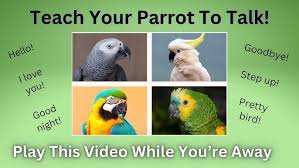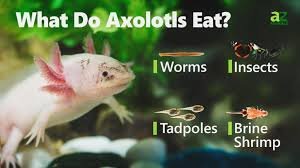
how can parrots talk
What Makes Parrots So Special?
Parrots are among the most intelligent bird species on the planet. What truly sets them apart is their ability to mimic human speech, a skill very few animals possess. From single words to full phrases, some parrots can sound almost indistinguishable from humans. But how is this possible? Unlike humans, parrots don’t have vocal cords. Instead, they use a unique organ called the syrinx, located at the base of their trachea, to produce sound. Combined with exceptional auditory memory and social intelligence, this physical adaptation enables parrots to reproduce complex sounds, including human language.
How the Syrinx Helps Parrots Talk
The syrinx is the vocal organ in birds that functions similarly to human vocal cords. In parrots, it’s particularly well-developed and capable of fine-tuned muscular control. This allows them to manipulate pitch, tone, and rhythm very precisely. Parrots can adjust airflow and muscle tension in the syrinx to create a wide range of sounds. This remarkable control is what enables them to mimic speech so accurately. In fact, studies have shown that some parrots can replicate not just the words, but also the accent, emotional tone, and inflection used by their human companions.
The Role of Brain Structure in Speech Mimicry
Another reason parrots can talk is their exceptional brain anatomy. Specifically, they possess a brain structure called the core and shell song system, which is not found in most other birds. This structure is part of the avian forebrain, responsible for learning and imitating sounds. According to research from Duke University, parrots also have enlarged regions in their brain associated with higher-order thinking and vocal learning. This combination of motor control and auditory processing allows them to hear, memorize, and reproduce sounds with incredible precision.
Why Do Parrots Mimic Human Speech?
In the wild, parrots communicate using a wide range of calls, whistles, and vocalizations to interact with their flock. In captivity, however, humans become their flock, and parrots attempt to communicate in a way that seems most effective—by mimicking human speech. Parrots are highly social animals, and vocal mimicry is part of how they bond and gain attention. When they hear humans speaking often and see it results in social interaction, treats, or affection, they learn that mimicking those sounds gets them what they want. This is why parrots kept alone or in quiet homes often develop a smaller vocabulary than those surrounded by conversation and stimulation.
Do All Parrots Talk?
Not all parrots are equally talented at talking. While many species have the capacity to mimic human speech, some are much better at it than others. The most famous talking parrot is the African Grey Parrot, known for its ability to learn hundreds of words and even use them in meaningful context. Other good talkers include Amazon parrots, Eclectus parrots, and Indian Ringneck parakeets. On the other hand, Cockatoos and Macaws can talk but often have limited vocabularies or less clear pronunciation. Budgerigars (commonly known as Budgies) are surprisingly skilled talkers, especially the males, despite their small size.
Famous Parrots Known for Talking
One of the most well-known talking parrots in scientific history was Alex the African Grey Parrot. Trained by animal psychologist Dr. Irene Pepperberg, Alex could identify colors, shapes, and quantities and even express preferences. He demonstrated the ability to understand and use language meaningfully, rather than simply mimic. Another popular example is Einstein, a talking African Grey who has appeared on TV and social media, stunning audiences with her impressive vocabulary and comedic timing. These parrots prove that talking ability isn’t just mimicry—it may involve true cognitive processing.
Can Parrots Understand What They’re Saying?
This is a hot topic in animal cognition research. While many parrots mimic words without understanding, studies have shown that some can associate words with meanings. For example, parrots like Alex used words like “want,” “no,” and “come here” in appropriate contexts, indicating at least a basic level of comprehension. Though parrots likely don’t grasp grammar or syntax the way humans do, they can associate certain sounds with actions, objects, or outcomes. In this way, their “talking” often becomes a form of learned communication, rather than random noise-making.
How to Teach Your Parrot to Talk
Teaching your parrot to talk takes patience, consistency, and a lot of repetition. Start with simple, frequently used words like “hello,” “bye,” or your pet’s name. Use a cheerful, consistent tone and say the words clearly during feeding, playtime, or interactions. Positive reinforcement is key—give treats or affection when your bird attempts to mimic sounds. Avoid shouting or using negative language around them, as parrots may imitate anything they hear. Playing audio recordings can help, but nothing beats direct human interaction. The more your parrot hears and sees you talking, the more likely it is to mimic your speech.
Do Parrots Mimic Other Sounds Too?
Yes! In fact, parrots are master mimics beyond just human speech. They can imitate doorbells, ringtones, microwaves, and even barking dogs. This is because parrots learn by associative mimicry—they repeat sounds they hear frequently, especially if those sounds get a reaction. In households with lots of environmental noise, parrots may pick up unexpected sounds and repeat them with startling accuracy. In the wild, parrots mimic each other or nearby animals as part of their social structure, so this ability is an extension of their natural behavior.
Are There Risks or Downsides?
While a talking parrot is fascinating, it’s important to remember that parrots are high-maintenance, long-lived pets that require mental stimulation and social interaction. If left alone or ignored, parrots may develop behavioral problems like screaming, feather plucking, or anxiety. Mimicking inappropriate language or annoying sounds can also become a problem if not addressed early. Responsible parrot owners should ensure they provide enough interaction, proper nutrition, and mental enrichment to keep their birds happy and well-adjusted.
Final Thoughts: Why Parrots Talk and What It Means
Parrots talk not just because they can, but because it fulfills their need for communication, bonding, and stimulation. Their unique anatomy, brain structure, and social behavior give them the tools to become remarkable mimics—and, in some cases, meaningful communicators. Whether you’re fascinated by their intelligence or considering adopting a parrot yourself, understanding how and why they talk adds a whole new level of appreciation for these extraordinary birds. With proper care and training, a parrot can become not just a pet, but a lifelong conversational companion.






